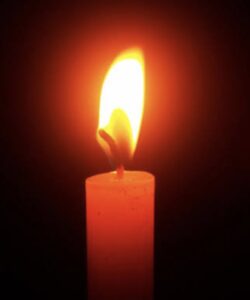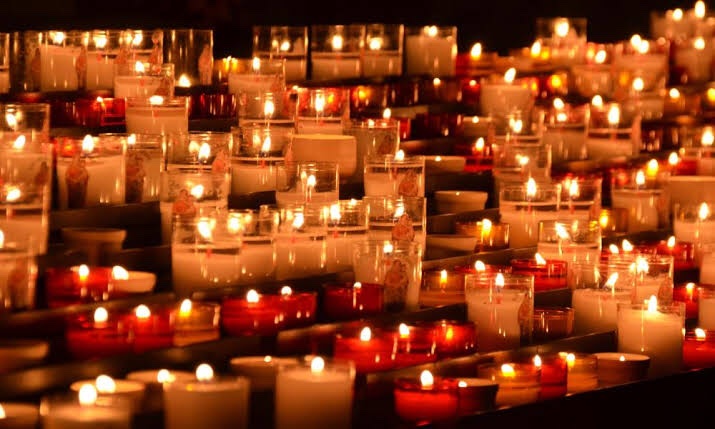
Undas is a traditional celebration in the Philippines. All Saints’ Day is celebrated in many Catholic countries.
Filipinos celebrate those who have gone on before them on this day to remember deceased friends and family.
History.
Before the Philippine Revolution in 1898, the Philippines was a Spanish colony. The ideas, customs, and traditions of the Spanish and Roman Catholic church have been incorporated into Filipino society, even though the Philippines is now under its own sovereignty. The celebration of All Saints’ Day is one such tradition.
All Saints’ Day began in the Roman Catholic church as a way for people to honor their dead. St. Patrick’s Day and St. Valentine’s Day are memorial days for saints in the Catholic tradition. Regular people who died and were not canonized had no day to honor them. All Saints’ Day was established by the Roman Catholic Church to remember and celebrate all saints.
There are two days dedicated to celebrating dead family members in each country where Roman Catholicism is established.
November 1 was supposed to be a day of church attendance and prayer for loved ones. For family members who are waiting to enter heaven, prayer is important. November 2 was celebrated as a day of celebration. Undas in the Philippines celebrates both somber and celebratory traditions on November 1 and 2. The holiday in the Philippines is similar to All Saints’ Day in Mexico.
All Saints’ Day is celebrated in every town across the country because 86 percent of the nation belongs to the Roman Catholic church.
All Saints’ Day is a holiday in the Philippines where families gather to honor and remember those who have passed on. It is believed that the day is a time to celebrate loved ones and remember them as if they were part of the family.
There are places to celebrate.
All Saints’ Day is celebrated in the church and cemetery. Many attend Mass , light candles and brings baskets of flowers such as lilies, orchids, marigolds, Anthuriums, radus , Roses as a religious requirement during All Saints’ Day.
Filipino families attend church services to remember their relatives, light a candle in their honor, and pray for them.
All Saints’ Day is celebrated in graveyards. The opposite can be said for those who celebrate Undas, as they would not feel awkward or uncomfortable spending time in a graveyard. In the Philippines, families gather around the gravemarkers of their loved ones and make it a family event.
They lay blankets down, set up chairs, purchase food, and make a day out of remembering their loved ones. Some families choose to spend the night in the cemetery.
Traditions that the whole family can participate in can be found in Undas. During this holiday there are cultural traditions and superstitions.
Here are some examples of rituals.
There is a type of Pista Minatay.
Sharing meals with dead loved ones is a result of this. Similar to many cultures around the world, food will be left in bowls, plates, and cups on a family alter. The spirits of the dead can visit their relatives in the world.
Food is left out for the ghosts and spirits of family members. It can be seen in celebrations such as the Hungry Ghost Festival in East Asia.
Favorite foods.
Many families will prepare the favorite meals and foods of their departed family members, even if they choose to leave out an assortment of food.
Everyone has different wishes. It is possible to honor your unique loved one.
Many mothers and aunts prepare for Undas by buying all the favorite foods of their departed husbands, fathers, and children. Undas has to prepare all the dishes for the next day.
Feasting and celebrating with family and friends.
While Undas is a day to remember the dead in a solemn manner, it is also a day of celebration.
Quality time, music, and food are enjoyed by families. They eat meals their relatives enjoyed while living with them, and share memories of their departed relatives.
Prayers.
All Saints’ Day, also known as Undas, is a day when the Catholic Church prays for the departed. When praying for family members who have gone ahead, the rosaries are also offered.
Some people write the names of their loved ones in the Book of the Dead and then pray a special prayer called the Office of the Dead.
There are people visiting the cemetery.
The living are not allowed to eat any food while food is set up for the deceased. Undas is a solemn occasion and shouldn’t have a party atmosphere.
The cemetery’s rules of decorum.
According to Filipino tradition, stepping on a gravemarker is disrespectful to the dead and brings years of bad luck to the walker.
The person is going to church.
After families spend time in the graveyard with their loved ones and friends, the entire community goes to their local church for Mass. It is a good time to remember loved ones who have died.
A celebration of the dead brings life.
It is a beautiful way to remember the lives of people that have come before, no matter what culture you are in or what people you are part of. Remembering our deceased relatives helps connect us to the people who have made us what we are, reminds us of our histories and brings gratitude for the life we have been given.
If you are a part of the Undas celebration, be sure to ask lots of questions. Learn from your friends, celebrate with them, and take joy in learning about their traditions.


